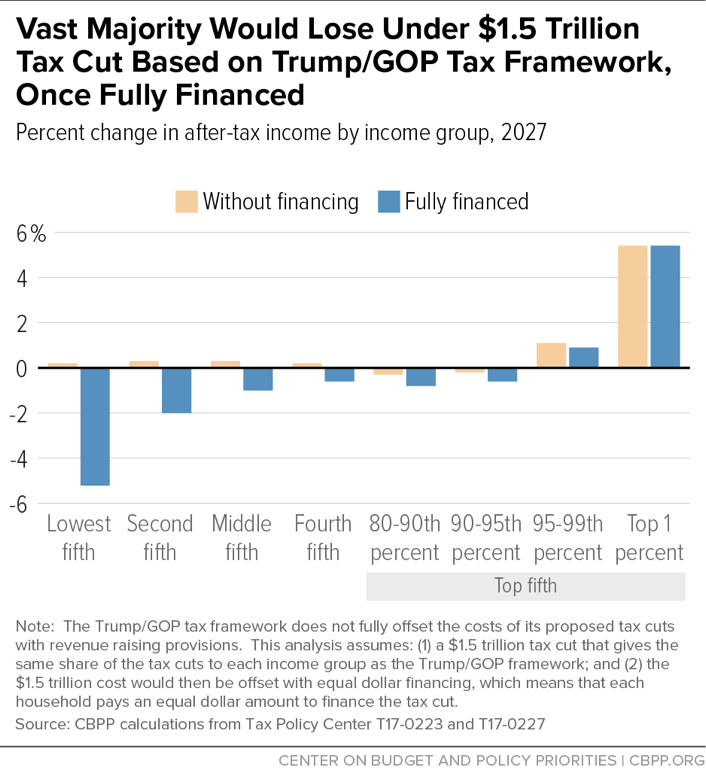más allá de los números
Roundup: Analyzing the Senate Budget Resolution
The Senate is expected to vote this week on its fiscal year 2018 budget resolution. Broadly, the budget:
- paves the way for a fast-track partisan process to pass tax-cut legislation that would add $1.5 trillion to deficits over the next decade and would primarily benefit the wealthy and corporations;
- calls for $5.8 trillion in budget cuts over the next decade, including cuts to a broad range of basic public services, assistance for low- and moderate-income Americans, and health care;
- would leave most low- and middle-income Americans worse off; and
- uses rosy economic assumptions to mask the size of future deficits.
We’ve collected our analysis of the budget here.
Senate Republicans Take Big First Step Towards $1.5 Trillion Revenue-Losing Tax Cut
The Senate Budget Committee-passed budget resolution allows the Senate to move forward with tax-cut legislation that could add $1.5 trillion to deficits over the next decade. Rather than requiring the $1.5 trillion cost to be offset through revenue-raising measures such as closing unproductive, inefficient, or low-priority tax breaks, the budget resolution would allow the tax cut’s cost to add to future deficits, thereby exacerbating the nation’s long-term fiscal challenges.
The tax-cut proposal would do little for working families with modest incomes or middle-income families. In contrast, the top 1 percent of households would receive 80 percent of the tax cuts by 2027 and the top one-tenth of 1 percent of households would get 40 percent of the tax cuts, or over $1 million apiece that year, on average.
Proposed Senate Budget Is Likely to Leave Millions of Americans Worse Off
The 2018 budget resolution will facilitate $1.5 trillion of deficit-increasing tax cuts, likely benefiting those who are most well-off. The resolution also calls for large cuts in health care, assistance programs that help Americans of modest means make ends meet, and funding for a broad swath of public services and investments — including education, scientific research, infrastructure, and more — that support the nation’s economy. Millions of Americans will likely end up worse off under this combination of policies, including most low- and middle-income children.
The spending cuts and tax increases needed to offset the cost of the Trump/GOP leaders’ tax cuts would cause most Americans’ incomes to fall more than they would gain from the tax cuts themselves.
Republicans Plan to Cut Taxes Now and Cut Programs Later
The Senate budget resolution sets up a likely two-step tax and budget agenda: enacting costly tax cuts now that are heavily skewed toward wealthy households and profitable corporations, then paying for them later through program cuts mostly affecting low- and middle-income families. People with disabilities, children, working families, and the elderly; and programs like health care, food assistance, and education would be among those hit hardest by these cuts.
Similarities Among Senate, House, and Trump Budget Plans Outweigh Their Differences
In May, President Trump issued a detailed budget proposal for 2018 and the next decade; in July, the House Budget Committee issued its own plan and the House approved that plan on October 5; on the same day, the Senate Budget Committee voted to report its own version. Though differing in detail, the three plans are broadly similar, containing deep cuts in non-defense appropriations and other entitlement programs, very deep cuts in health care, and expensive tax cuts tilted heavily towards the rich. Each also relies on rosy economic assumptions.

